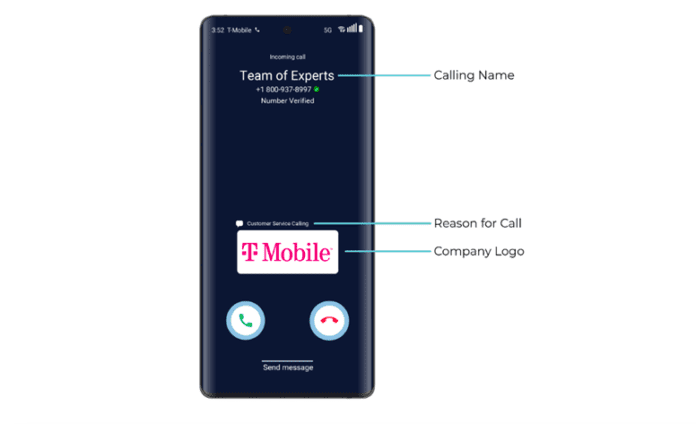There are two kinds of people in the world, says Grant Castle: Those who answer a call from an unknown number, and those who assume it’s a spam call and let it go to voicemail.
Castle, who is VP of engineering services and quality assurance at T-Mobile US, would like to see a third: Someone who answers any call that is verified by the STIR/SHAKEN framework, but lets all the others go to voicemail. He envisions a time when deciding whether to take a call is much more like a well-organized email inbox: All the legitimate ones are easily identifiable and can be answered, while the sketchy ones get automatically filtered out.
But how to get to that point? The Federal Communications Commission’s deadline for STIR/SHAKEN implementation for authenticating calls — basically, fingerprinting that a call legitimately originated on a carrier network before passing it on — passed on June 30, and all three national carriers have said they are in compliance. T-Mobile US, specifically, has said that all calls originating on its network are 100% STIR/SHAKEN compliant and that as of March of this year, it was the first U.S. wireless provider to work with all other major networks to implement STIR/SHAKEN on a cross-carrier basis. T-Mo says that it is working with a list of providers that collectively, represent 98% of U.S. wireless customers.
On Friday, T-Mobile USannounced a new technology demonstration that builds upon the verification of STIR/SHAKEN and takes it a step further, to affirmatively identify businesses or organizations who are calling — like doctors’ offices and school districts — so that they can reach their customers, who right now are often afraid to answer unknown numbers and can therefore miss important and wanted calls. Rich Call Data (RCD) would take a STIR/SHAKEN verified call to T-Mobile US subscribers and draw on a CTIA-maintained database to not only transmit the number that is calling and that it is verified (i.e., not likely to be spam), but also include the company name and even logo. Businesses would have to register with the database and go through a verification process in order for it all to work, with the goal of not just alerting customers to verified and unverified calls, but proactively helping them feel more confident that they can identify and answer legitimate calls.
T-Mo’s demo was conducted in conjunction with a number of partners: CTIA, First Orion, Everbridge, iconectiv, NetNumber, Numeracle, and Twilio. It uses CTIA’s Registered Caller database, and combines that with verification via STIR/SHAKEN to deliver the RCD information. “Because RCD is part of the STIR/SHAKEN framework, the information cannot be displayed unless it gets authenticated properly by the network,” T-Mobile US said. “This gives organizations greater control over how their branding and call intent is received by those they are calling, and it means that recipients know exactly who is calling and even why they are calling, with a high degree of trust.”
“The ability to deliver RCD to mobile devices is a key tool in the battle against scammers as it increases consumer trust in knowing who is calling them and why,” said Abdul Saad, CTO of T-Mobile. “This proof-of-concept shows that by working together as an industry we can make sure that legal, critical, and wanted calls are delivered with a high level of consumer confidence.”
“Imagine a future where all phone calls will be delivered with RCD providing complete transparency and protection in every call for every consumer, enhancing the way businesses connect with their customers,” said Jeff Stalnaker, president and founder of First Orion. “Working with T-Mobile and other industry leaders to deliver this first-ever mobile call with RCD and authenticated Caller ID is an important step in making Enhanced Caller Identity a reality.”
The goal, Castle says, is “we just want people to answer their phones again. Remember when you used to answer the phone? Let’s do that again. We’re trying to get the scammers out, but we’re [also] trying to … raise up the legitimate people, so it’s clear, more obvious, simpler for consumers and simpler for business … and let people connect again.”

